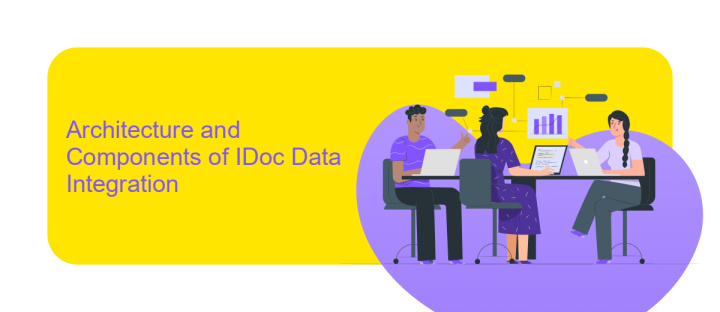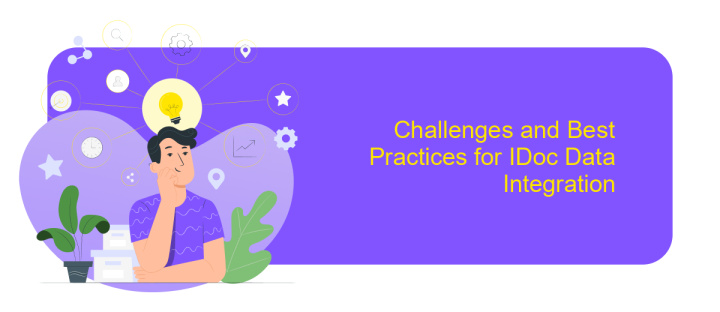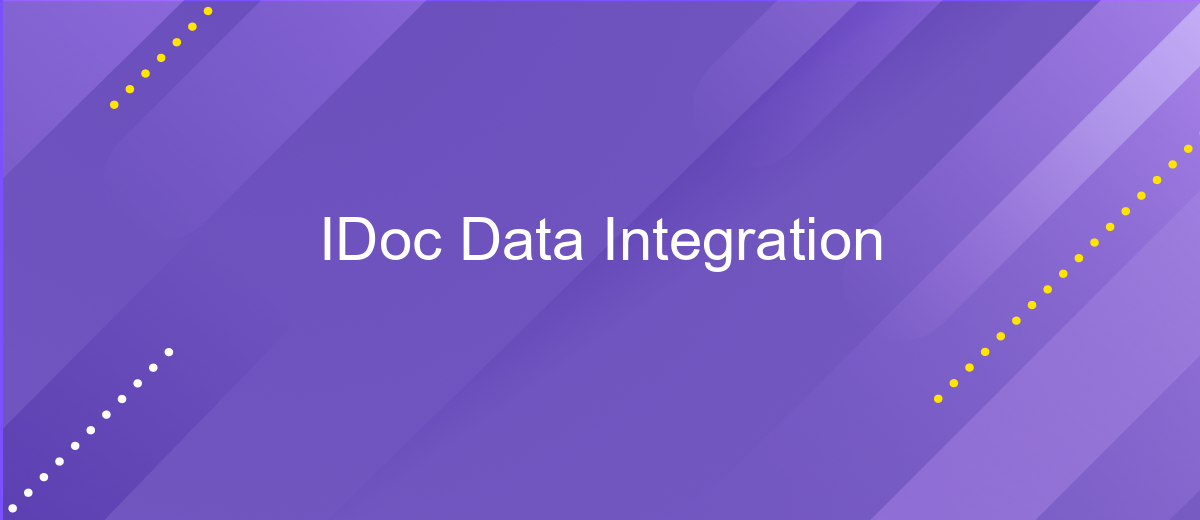IDoc Data Integration
In today's fast-paced business environment, efficient data integration is crucial for seamless operations. IDoc (Intermediate Document) technology offers a robust solution for integrating data across diverse systems within an organization. This article explores the fundamentals of IDoc data integration, its benefits, and how it can streamline processes, reduce errors, and enhance overall productivity.
Introduction to IDoc Data Integration
IDoc (Intermediate Document) is a standard data structure used in SAP applications to transfer data between systems. It serves as a versatile and reliable method for integrating various business processes and ensuring seamless communication across different platforms. IDoc Data Integration is crucial for businesses that rely on SAP for managing their operations, as it enables efficient data exchange and process automation.
- Standardized data format
- Supports asynchronous communication
- Facilitates integration with non-SAP systems
- Ensures data consistency and integrity
- Enables monitoring and error handling
By leveraging IDoc Data Integration, organizations can streamline their workflows, reduce manual data entry, and minimize errors. This integration method not only enhances operational efficiency but also provides a scalable solution for growing business needs. As companies continue to evolve, the ability to integrate diverse systems seamlessly becomes increasingly important, making IDoc an indispensable tool in the SAP ecosystem.
Architecture and Components of IDoc Data Integration

IDoc Data Integration is a crucial component in the seamless flow of data between SAP systems and external applications. The architecture of IDoc integration involves several key components: the sender system, the receiver system, and the middleware that facilitates communication between these systems. IDocs (Intermediate Documents) serve as the data containers that hold the information to be exchanged. They are generated by the sender system, transmitted through the middleware, and processed by the receiver system. The middleware typically includes components such as the IDoc interface, ALE (Application Link Enabling), and RFC (Remote Function Call) for effective data transfer.
The integration process can be further streamlined using services like ApiX-Drive, which simplifies the configuration and management of data integrations. ApiX-Drive offers a user-friendly interface to set up and monitor IDoc data flows, reducing the complexity involved in manual configurations. This service ensures that data is accurately and efficiently transferred between systems, minimizing errors and enhancing overall data integrity. By leveraging such tools, businesses can achieve more robust and scalable IDoc data integration solutions.
Benefits and Use Cases of IDoc Data Integration

IDoc Data Integration offers numerous advantages for businesses looking to streamline their data exchange processes. By enabling seamless communication between different systems, IDoc ensures data consistency and reduces the risk of errors, ultimately enhancing operational efficiency.
- Automation of Data Exchange: IDoc facilitates automated data transfer, minimizing manual intervention and the associated errors.
- Improved Data Accuracy: By standardizing data formats, IDoc reduces discrepancies and ensures uniformity across systems.
- Enhanced Business Processes: Real-time data integration allows for quicker decision-making and more responsive business operations.
- Cost Efficiency: Automation and improved data accuracy lead to reduced operational costs and increased productivity.
- Scalability: IDoc can easily adapt to growing business needs, supporting larger volumes of data and more complex integrations.
In summary, IDoc Data Integration is a powerful tool for businesses aiming to optimize their data management practices. Its ability to automate, standardize, and scale makes it an invaluable asset for improving overall business performance and achieving long-term success.
Challenges and Best Practices for IDoc Data Integration

Integrating IDoc data into various systems presents several challenges, including data consistency, error handling, and performance issues. Ensuring that data remains consistent across different platforms requires robust validation and synchronization mechanisms.
Error handling is another critical aspect, as any failure in IDoc processing can disrupt business operations. Implementing effective error detection and recovery strategies is essential to maintain seamless integration.
- Ensure data consistency through regular validation checks.
- Implement comprehensive error handling and recovery procedures.
- Optimize performance by streamlining IDoc processing workflows.
- Maintain detailed logging for monitoring and troubleshooting.
- Regularly update and test integration configurations.
By following these best practices, organizations can overcome the common challenges associated with IDoc data integration. This ensures a more reliable, efficient, and scalable integration process, ultimately supporting smoother business operations and better data management.
Future of IDoc Data Integration
The future of IDoc data integration is poised to be shaped by advancements in automation and artificial intelligence. As businesses increasingly seek efficiency, the demand for seamless and real-time data exchange will grow. This will likely lead to the development of more sophisticated tools and platforms that can handle complex integration scenarios with minimal human intervention. Enhanced security measures and compliance with global standards will also play a crucial role in ensuring the integrity and confidentiality of data during the integration process.
Moreover, services like ApiX-Drive are set to revolutionize the way IDoc data integration is approached. By offering user-friendly interfaces and robust automation capabilities, ApiX-Drive simplifies the integration process, allowing businesses to connect various systems without extensive technical knowledge. This democratization of integration technology will enable even small and medium-sized enterprises to leverage the power of IDoc data integration, driving innovation and competitiveness across industries. As these technologies evolve, we can expect a more interconnected and efficient digital ecosystem.
FAQ
What is IDoc?
How can I integrate IDoc with non-SAP systems?
What types of data can be transferred using IDoc?
How do I automate IDoc data integration processes?
What are the benefits of using IDoc for data integration?
Time is the most valuable resource in today's business realities. By eliminating the routine from work processes, you will get more opportunities to implement the most daring plans and ideas. Choose – you can continue to waste time, money and nerves on inefficient solutions, or you can use ApiX-Drive, automating work processes and achieving results with minimal investment of money, effort and human resources.

